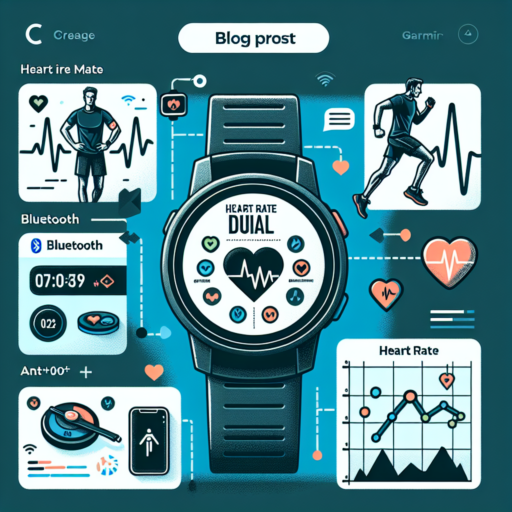What is a heart rate machine called?
A heart rate machine, crucial for monitoring heart activity, is commonly referred to as a Heart Rate Monitor (HRM). These devices play a vital role in both healthcare settings and personal fitness regimes. They provide essential data that can help in assessing cardiovascular health, tailoring workout plans, and even tracking recovery progress during rehabilitation. Heart rate monitors come in various forms, each designed to suit different needs and preferences.
Traditionally, the most recognized form of HRM is the chest strap monitor, which directly measures electrical signals from the heart, offering considerable accuracy. This type of HRM is often preferred by athletes and fitness enthusiasts for its reliability during intense physical activities. Another popular version is the wrist-based HRM, typically found in smartwatches and fitness trackers. These gadgets use optical sensors to detect blood flow and are praised for their convenience and ease of use in everyday life.
Furthermore, technological advancements have introduced innovative variations like fingertip and earlobe heart rate monitors, each with its unique method of capturing heart rate data. Despite the differences in their operation and application, what ties all these devices together is their fundamental purpose: to provide real-time insights into an individual’s heart rate. It’s the precision, comfort, and applicability of the monitor that determine its suitability for different users.
What is the most accurate heart rate device?
Identifying the most accurate heart rate device can be a tall order due to the sheer variety of options available in the market. However, when considering precision and reliability, chest strap monitors stand out amongst their peers. Unlike wrist-based trackers, chest straps monitor heart rate directly from the heart’s electrical impulses, providing a level of accuracy favored by athletes and fitness enthusiasts alike.
Another worthy mention in the pursuit of the most accurate device is the advancement in optical heart rate sensors. These are commonly found in smartwatches and fitness bands. Modern iterations of these devices have significantly improved in accuracy, now closely rivaling traditional chest straps, especially for everyday activities and non-intensive workouts. They work by shining a light through the skin to measure the blood flow, a technology that continues to evolve rapidly.
However, the accuracy of any heart rate device can also be influenced by personal factors such as skin tone, hair density, and physical activity level. Therefore, when seeking out the most accurate device, it is crucial to consider these individual differences. Calibration features and the ability to integrate with other fitness tools can also play a significant role in enhancing accuracy.
What is a BPM machine called?
When discussing BPM machines, it’s essential to understand exactly what the term refers to. BPM stands for Beats Per Minute, a unit of measurement used primarily to quantify the tempo of music or the heart rate in medical and fitness applications. However, within the context of monitoring or measuring heart rates, a BPM machine is more commonly known as a Heart Rate Monitor.
Varieties of BPM Machines
Heart Rate Monitors, or BPM machines, come in various forms, tailored to a wide range of needs and preferences. The most common types include wristwatch-style monitors, chest strap models, and even finger ring sensors. These devices can range from simplistic models that only display your current heart rate, to advanced gadgets capable of tracking multiple health metrics, syncing with smartphones, and offering personalized fitness coaching.
Understanding the specific terminology and the diverse types of BPM machines available is crucial for individuals aiming to monitor their heart rate, whether for health monitoring, fitness training, or even stress management purposes. Each type of BPM machine, from the wristwatch-style to the more intricate chest strap variants, offers unique features suited to different user requirements.
No se han encontrado productos.
What is a normal heart rate?
Understanding your heart rate is pivotal in monitoring your physical health and detecting potentially concerning symptoms early. A normal heart rate varies throughout the day, influenced by activities, emotional states, and overall health. However, the benchmark for a healthy adult typically falls within a specific range.
A generally accepted range for a healthy adult’s resting heart rate is between 60 and 100 beats per minute (bpm). Notably, athletes or individuals who are exceptionally fit might have a resting heart rate that is lower than 60 bpm, which often reflects their heart’s efficiency in pumping blood throughout the body. It’s important to recognize that what is considered ‘normal’ can vary significantly from one person to another, depending on factors such as age, fitness level, and the presence of medical conditions.
Assessing your heart rate and understanding its implications requires knowing how to measure it accurately. Ideally, the resting heart rate should be measured first thing in the morning before engaging in any physical activity. It can be measured by checking the pulse on your wrist or neck, using either the traditional method of counting the beats for a minute or employing a digital device designed for this purpose. Keeping a log of your heart rate readings can help identify any abnormal changes or trends over time.




